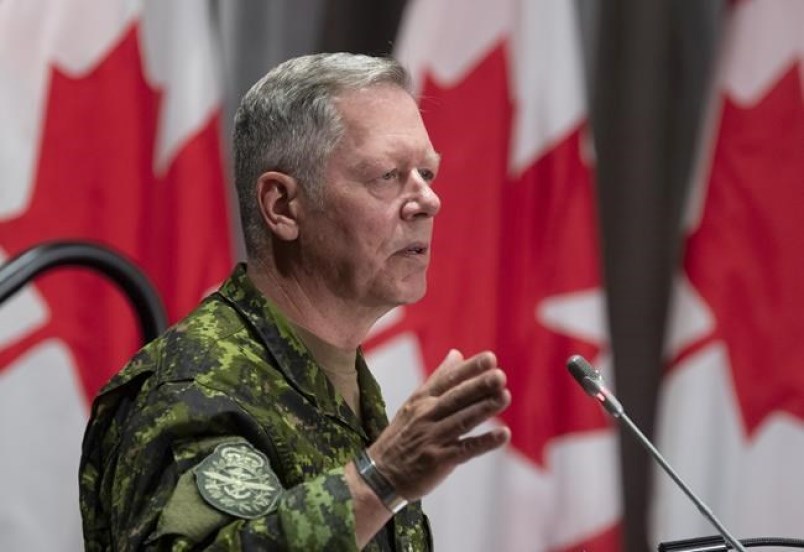OTTAWA — Top defence officials have ordered Canadian troops to keep up their guard against COVID-19 while painting a gloomy picture of how the pandemic could affect the military and country for the next year – if not longer.
The order and assessment are contained in a new directive to military personnel and Defence Department officials issued Tuesday by chief of defence staff Gen. Jonathan Vance and Defence Department deputy minister Jody Thomas.
It represents the latest call to arms to service members since March, when the Armed Forces was first put on high alert in anticipation of requests for assistance as COVID-19 spread across the country.
Military commanders have gone out of their way to protect the Armed Forces from COVID-19 since March, in part to ensure enough troops to respond to an emergency at home but also to maintain operations abroad.
Tuesday’s new directive, issued amid an increase in the number of new COVID-19 cases across Canada in recent weeks, emphasized the continued importance of that objective.
"The principal challenge confronting DND/CAF as a resurgence looms is the preservation of force health and the operational effectiveness of critical capabilities while most segments of society remain open," it reads.
It was in that context that "complacency" around physical distancing, mask wearing and other public-health measures was described as "the greatest threat" to the military.
"It is critical that every member of the defence team apply (public-health measures), including the use of non-medical masks, and that we set an unimpeachable example at work, at home, and in our communities," the directive reads.
At the same time, troops were warned the pandemic is likely get worse before it gets better, with expectations it could last 12 months or longer and manifest in a number of waves across the country.
To that end, the directive said officials expect more military personnel to get infected as schools and businesses remain open. Thirty-five service members currently have COVID-19 while 244 others have tested positive since March and since recovered.
Shortages of COVID-19 testing equipment and personal protective equipment are also expected to persist while the pandemic increases instability both here and around the world.
At the same time, while the directive says having troops work from home is one of the most important ways to protect them from infection, "it also exposes the DND/CAF to an increased risk of cyber-security threats."
Conspiracy theories and deliberate misinformation campaigns related to COVID-19 are also expected to continue "as malicious actors seek to sow confusion, mistrust, and politicize the pandemic," it adds.
"Adversaries will continue to leverage the COVID-19 environment to seek out our vulnerabilities and attempt to exploit them, thus creating pressure on allies to galvanize and deter military aggression."
China and Russia in particular have been accused by western governments of trying to use the pandemic to advance their own agendas.
In an attempt to stay ahead of the challenges outlined, the directive provides a series of specific measures and responsibilities for different parts of the Canadian Armed Forces and Defence Department, in addition to following public-health measures.
Those include the procurement of required protective equipment, increasing the protection of military information networks and limiting access to many buildings and locations.
It also encourages troops to obtain support if they are feeling isolated or otherwise seeing their mental health affected by isolation, though they are allowed to volunteer and engage in other activities with permission from their commanders.
This report by The Canadian Press was first published Oct. 20, 2020.
